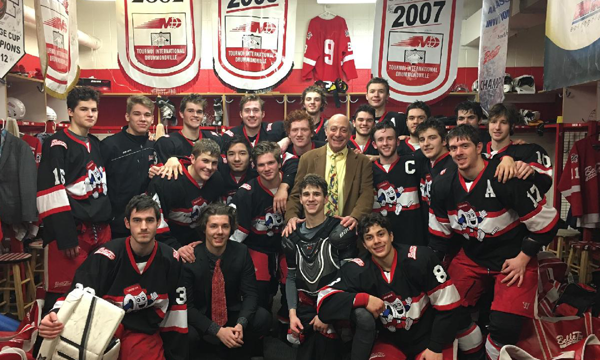Instead, Coury focused on developing his players. And the only way Coury felt his players would properly develop is if they played. Coury was 30-to-40 years ahead of his time, as he implemented USA Hockey coaching policies and procedures that are stressed today. Coury played all four lines, didn’t have specialized power play or penalty kill units and switched goaltenders at the midway point of games.
“My number one goal was to give every player a great experience,” Coury said. “I wanted them to remember their hockey days fondly, so that when they were sitting at a desk in their 40s, and they looked at the team picture, they could say to themselves that those were the best days of their lives.”
Coury believed developing all the players on his roster was more important than winning at all costs and it paid off in a big way. Coury’s teams have captured nine national championships and 23 state titles throughout his career.
“I love the first [championship] and the last one just the same,” Coury said. “We won our eighth or ninth in a row one time a reporter asked me what I’m going to do after this and I told him that we’re going to keep on winning. It’s like eating candy, the more you win, the more you want to win.”
Coury said a big reason for his success is the number of great players he’s had the pleasure of coaching. That list includes Hockey Hall of Famer Mike Modano, as well as U.S. Hockey Hall of Famers John Vanbiesbrouck and brothers Kevin and Derian Hatcher.
On top of the Hall of Famers, Coury has also coached three current NHLplayers: Jalen Chatfield (Carolina), Jordan Oesterle (Detroit) and Sheldon Dries (Vancouver).
“I’ve been lucky in my life to have great players,” Coury said. “If you have great players, they make you look good.”
Coury also has a keen eye for talent.
He worked as a full-time amateur player scout for the Detroit Red Wings from 1983-96. He started scouting lower minor league systems before moving onto college and some major junior teams. Coury traveled across North America, evaluating talent on various amateur teams and helped the Red Wings rank players for the draft. His focus was primarily on U.S. college and high school athletes.
“It taught me a lot about how to look at players,” Coury said. “I felt I could always judge talent, but I had to be able to project that a kid could play in the National Hockey League. The era and game was so much different then, but it was very interesting.”
Gordie Howe initially drew Coury to the game as a child. He watched Howe 225 times live at Olympia Stadium in Detroit when the NHL was a six-team league.
“I didn’t know anything about the game, but I could tell that one player was better than everyone else,” Coury said.
That led Coury to his life’s calling and the impact he had on the players he coached. He doesn’t believe he’s a “tactical genius” behind the bench. Instead, Coury described himself as “an average guy who works really hard at what he does.”
Even though Coury has been coaching for 56 years, he still believes he has more to offer to the game.
“I met so many wonderful people in my life throughout my career and without them, none of this would’ve been possible,” Coury said. “The wins are nice, but my satisfaction has truly been watching the kids improve.”
Story from Red Line Editorial, Inc.



